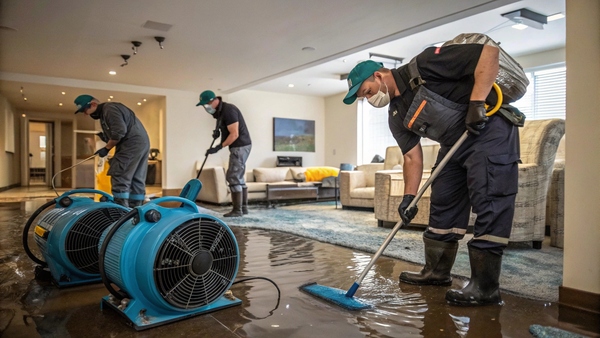Notifications
ALL BUSINESS
COMIDA
DIRECTORIES
ENTERTAINMENT
FINER THINGS
HEALTH
MARKETPLACE
MEMBER's ONLY
MONEY MATTER$
MOTIVATIONAL
NEWS & WEATHER
TECHNOLOGIA
TV NETWORKS
VIDEOS
VOTE USA 2026/2028
INVESTOR RELATIONS
COMING 2026 / 2027
ALL BUSINESS
COMIDA
DIRECTORIES
ENTERTAINMENT
FINER THINGS
HEALTH
MARKETPLACE
MEMBER's ONLY
MONEY MATTER$
MOTIVATIONAL
NEWS & WEATHER
TECHNOLOGIA
TV NETWORKS
VIDEOS
VOTE USA 2026/2028
INVESTOR RELATIONS
COMING 2026 / 2027
 mark brown -
May 15 -
Business -
water mold fire restoration
water cleanup
-
219 views -
0 Comments -
0 Likes -
0 Reviews
mark brown -
May 15 -
Business -
water mold fire restoration
water cleanup
-
219 views -
0 Comments -
0 Likes -
0 Reviews

Disasters like floods, fires, and mold infestations can devastate homes and businesses alike. Knowing how to respond swiftly and effectively can minimize damage and protect long-term property value. This guide offers comprehensive advice on post-disaster recovery, from cleanup to full-scale restoration.
-
Disasters can happen at any time, leaving behind destruction that feels overwhelming. Whether it’s water damage from a burst pipe, fire and smoke damage, or a hidden mold problem, quick and professional action is essential to restore your property and peace of mind.
Damage from natural or accidental disasters can affect every part of a structure. In many cases, water mold fire restoration services are needed to comprehensively tackle the aftermath of these events. Without proper assessment and intervention, issues can worsen over time, leading to more extensive repairs.
The first step in any disaster recovery plan should be water cleanup, especially after flooding or firefighting efforts. Leaving water to sit can accelerate mold growth and structural weakening, increasing the cost of restoration.
Many homeowners attempt DIY fixes, but this often leads to incomplete recovery. Effective water mold fire restoration requires specialized equipment and expertise to detect hidden damage and eliminate it completely. Restoration professionals understand how to handle contaminants safely and prevent future hazards.
When the property is saturated or contaminated, water cleanup goes beyond simple drying. Industrial pumps, dehumidifiers, and antimicrobial treatments are essential to ensure a clean and safe environment.
Mold can grow in as little as 24 to 48 hours after water exposure. It's not just unsightly—it poses serious health risks. Timely water mold fire restoration is the best defense against a persistent mold problem, particularly in hidden areas like walls and ductwork.
After excess moisture has been removed through thorough water cleanup, professionals will inspect for signs of mold spread. This step is crucial in ensuring the home is not only dry but also healthy.
Fires cause more than just visible destruction. Smoke and soot can penetrate walls, ceilings, and HVAC systems, causing lingering odors and toxic residues. A full water mold fire restoration plan addresses smoke cleanup as seriously as structural repair.
Even when fire damage seems minor, residual water from extinguishing the flames can pose further risks. In such situations, water cleanup must follow immediately to stop mold from thriving in damp conditions.
Inspection and Assessment: Restoration begins with a comprehensive review of all affected areas.
Water Removal and Drying: Fast and effective water mold fire restoration begins with water extraction and moisture control.
Smoke and Soot Removal: Specialized techniques are used to remove residues and deodorize the space.
Mold Remediation: After water cleanup, affected materials are treated or removed to eliminate mold.
Reconstruction: The final phase restores the structure to its pre-disaster condition.
Each stage is critical to a successful recovery, and skipping any step could compromise the long-term integrity of the building.
Look for companies that specialize in water mold fire restoration, with experience handling insurance claims and emergency response. Check for certifications, like those from the Institute of Inspection Cleaning and Restoration Certification (IICRC).
When seeking water cleanup, ensure the company uses advanced drying technology and offers mold remediation as part of the service package. This integrated approach ensures more thorough results.
Once recovery is complete, focus on prevention. Install water detection devices, maintain roofing and plumbing systems, and regularly inspect for signs of leaks or mold. A proactive approach helps reduce the chances of needing water mold fire restoration services again. After going through water cleanup, many property owners find value in waterproofing basements and improving ventilation to avoid repeat mold issues. Preventative upgrades are an investment in long-term peace of mind.
Q: How quickly should I start the restoration process after a disaster?
A: Ideally, within 24 hours. Delaying water cleanup increases the risk of mold and permanent damage.
Q: Can I do restoration on my own?
A: Minor damage might be manageable, but full water mold fire restoration requires professional tools and expertise.
Q: What are the signs I need mold remediation?
A: Musty odors, visible mold spots, and recent water exposure are all signs. A professional can assess the need post-water cleanup.
Q: How long does restoration take?
A: It varies based on damage severity. Most water mold fire restoration projects take from a few days to several weeks.
Q: Will insurance cover the costs?
A: Often, yes. Restoration companies experienced in water cleanup can help document damage for insurance claims.
